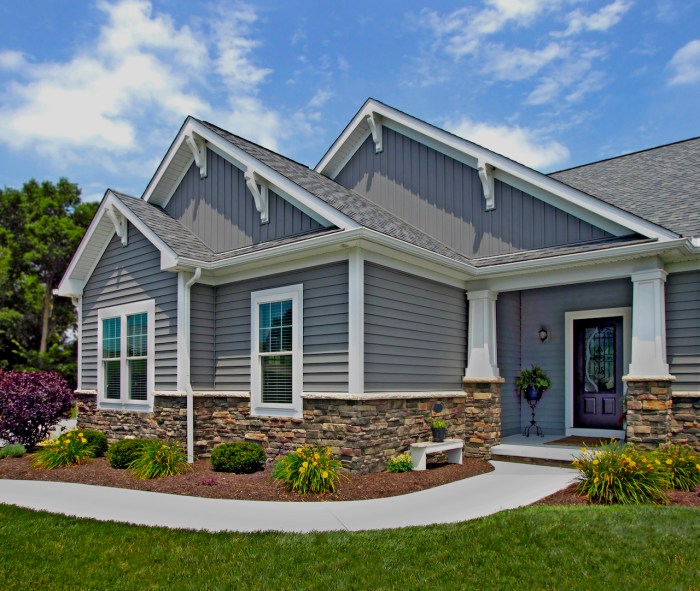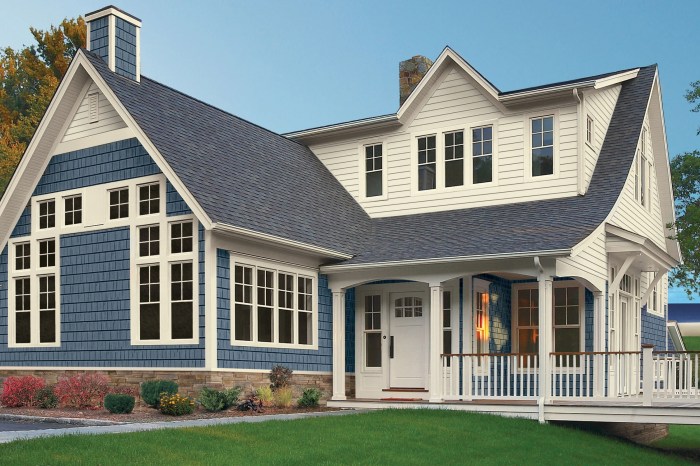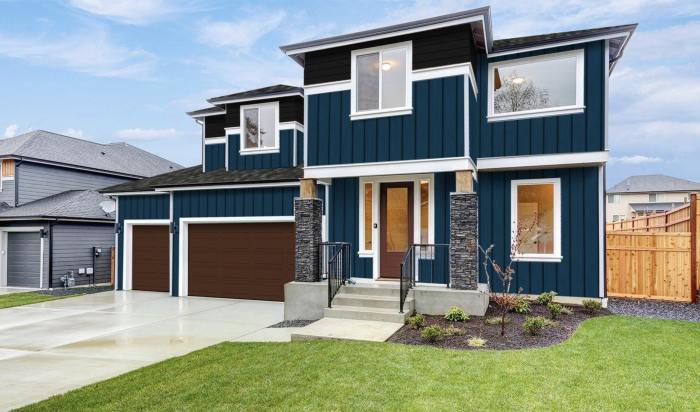Exploring the World of Vinyl Exterior
Vinyl exterior is a versatile material that has revolutionized the construction industry. From its durability to its aesthetic appeal, vinyl offers a wide array of benefits that make it a popular choice for exterior applications. Let's delve into the realm of vinyl exterior and uncover its many facets.
Introduction to Vinyl Exterior

Vinyl exterior refers to the use of vinyl material for various applications on the exterior of buildings, such as siding, windows, doors, and trim. Vinyl is a synthetic material known for its durability, versatility, and low maintenance requirements.
There are several benefits to using vinyl for exterior applications. Firstly, vinyl is resistant to moisture, rot, and insects, making it ideal for areas with high humidity or extreme weather conditions. Additionally, vinyl is available in a wide range of colors and finishes, allowing for customization to suit different architectural styles and preferences.
Another advantage of vinyl is its cost-effectiveness compared to other materials like wood or metal.
Popularity of Vinyl Exterior in the Construction Industry
Vinyl exterior has gained popularity in the construction industry due to its durability, low maintenance requirements, and affordability. Many homeowners and builders choose vinyl for its long-lasting performance and aesthetic appeal. In addition, advancements in vinyl manufacturing technology have led to improved quality and energy efficiency, further contributing to its widespread use in construction projects.
Types of Vinyl Exterior Finishes
Vinyl exterior finishes come in various types, each offering unique characteristics and durability. Let's explore the different options available:
Solid Vinyl Finish
A solid vinyl finish is a popular choice for exterior siding due to its durability and resistance to fading. This finish typically has a consistent color throughout the material, making it a low-maintenance option for homeowners.
Foam-Backed Vinyl Finish
A foam-backed vinyl finish provides added insulation to the exterior of a home, helping to improve energy efficiency. This type of finish also offers enhanced impact resistance and noise reduction, making it a practical choice for many homeowners.
Textured Vinyl Finish
Textured vinyl finishes mimic the look of natural materials such as wood or stone, adding visual interest to the exterior of a home. This finish is available in a variety of styles and colors, allowing homeowners to customize their home's aesthetic.
Shake Vinyl Finish
Shake vinyl finishes replicate the appearance of traditional cedar shakes, providing a rustic and charming look to a home's exterior. This finish is durable and long-lasting, offering the beauty of wood without the maintenance requirements.
Installation Process for Vinyl Exterior
When it comes to installing vinyl exterior, there are several key steps to follow to ensure a successful installation. Additionally, there are certain tools and techniques that can make the process easier and more efficient. Here, we will discuss the installation process for vinyl exterior in detail, along with tips for a smooth installation.
Preparation and Planning
Before beginning the installation of vinyl exterior, it is important to properly prepare and plan the project. This includes measuring and cutting the vinyl panels to fit the specific dimensions of the exterior surface. Make sure to account for any windows, doors, or other obstacles that may require special cuts.
Tools and Materials
- Utility Knife: A sharp utility knife will be essential for cutting the vinyl panels to size.
- Level: Use a level to ensure that the vinyl panels are installed straight and evenly.
- Caulk Gun: A caulking gun will be needed to apply sealant around the edges of the vinyl panels.
- Siding Nails: Use siding nails to secure the vinyl panels to the exterior surface.
- J-Channel: J-channel trim pieces will be necessary for finishing edges and corners.
Installation Steps
- Clean the exterior surface thoroughly to ensure proper adhesion.
- Install starter strips at the bottom of the wall to provide a secure base for the vinyl panels.
- Begin installing the vinyl panels from one corner, working your way across and up the wall.
- Secure each panel with siding nails, making sure to leave a small gap for expansion and contraction.
- Trim panels as needed to fit around windows, doors, and other obstacles.
- Finish the edges and corners with J-channel trim pieces for a clean and polished look.
Tip: Make sure to follow manufacturer instructions and guidelines for the specific vinyl exterior product you are using to ensure proper installation.
Maintenance and Care of Vinyl Exterior

Proper maintenance and care of vinyl exterior surfaces are essential to ensure their longevity and appearance. By following some guidelines, you can protect your vinyl exterior from damage and address common issues effectively.
Cleaning Vinyl Exterior
- Regularly clean vinyl exterior surfaces with a mixture of mild soap and water to remove dirt, dust, and grime.
- Avoid using harsh chemicals or abrasive cleaners that can damage the vinyl finish.
- Rinse thoroughly with clean water after cleaning to prevent soap residue buildup.
- For stubborn stains, you can use a solution of vinegar and water or a specialized vinyl cleaner following the manufacturer's instructions.
Protecting Vinyl Exterior
- Avoid direct contact with heat sources such as grills or fire pits to prevent warping or melting of the vinyl material.
- Regularly inspect the vinyl exterior for any signs of damage, such as cracks, chips, or fading, and address them promptly.
- Trim back any vegetation or bushes near the vinyl exterior to prevent mold or mildew growth.
- Consider applying a protective coating or sealant to enhance the durability and weather resistance of the vinyl surface.
Common Issues and Solutions
- Cracking: Fill in cracks with a vinyl patch kit or silicone caulk to prevent water infiltration and further damage.
- Fading: Apply a UV-resistant vinyl protectant to restore color and protect the surface from sun damage.
- Warping: Address warping by adjusting the temperature and humidity levels around the vinyl exterior or consulting a professional for repairs.
- Mold and Mildew: Clean mold and mildew with a solution of bleach and water, then rinse thoroughly to prevent regrowth.
Environmental Impact of Vinyl Exterior

When it comes to the environmental impact of using vinyl for exterior applications, there are several factors to consider. Let's explore the sustainability of vinyl, recycling options for vinyl exterior materials, and compare its environmental footprint with other materials.
Sustainability of Vinyl for Exterior Applications
Vinyl is a durable material that requires minimal maintenance, making it a long-lasting option for exterior use. Its energy-efficient properties can contribute to reducing heating and cooling costs in buildings, which can have a positive impact on energy consumption.
Recycling Options for Vinyl Exterior Materials
While vinyl itself is not biodegradable, it can be recycled to create new products. Many manufacturers offer recycling programs for old vinyl materials, allowing them to be repurposed rather than ending up in landfills. This can help reduce waste and promote a more sustainable lifecycle for vinyl products.
Comparing Environmental Footprint
When compared to other materials like wood or aluminum, vinyl generally has a lower environmental footprint. Its durability and energy efficiency can contribute to a longer lifespan, reducing the need for frequent replacements and the associated energy and resource consumption.
Final Summary
As we conclude our exploration of vinyl exterior, it's clear that this material is not just a surface covering but a fundamental component of modern architecture. Its impact on sustainability, durability, and aesthetic appeal cannot be overstated. Vinyl exterior truly stands as a testament to innovation in construction materials.
FAQ
What are the advantages of using vinyl exterior?
Vinyl exterior offers exceptional durability, low maintenance requirements, and a wide range of design options.
How can I protect vinyl exterior from damage?
Regular cleaning, avoiding harsh chemicals, and inspecting for any damage can help protect vinyl exterior surfaces.
Is vinyl exterior environmentally friendly?
Vinyl exterior has a low environmental impact and can be recycled, making it a sustainable choice for exterior applications.